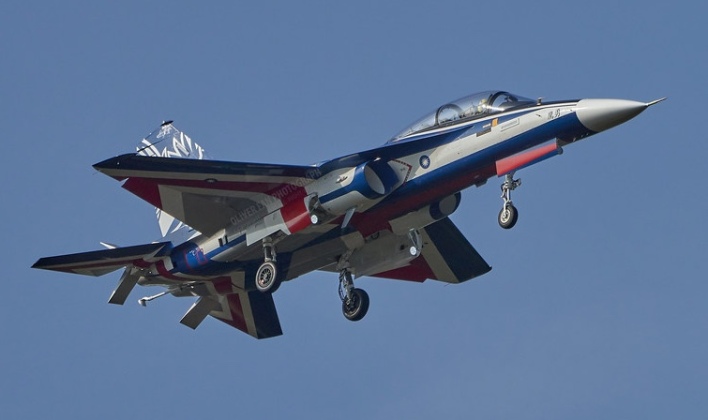News
Will Taiwan Be Next to Start a Stealth Fighter Program? Fifth Gen. Successor to F-CK Ching Kuo Under Consideration

The Republic of China Air Force, the official name of the air arm of Taiwan’s armed forces, has faced an increasingly unfavourable balance of power in the Taiwan Strait since the late 1990s due to the rapid modernisation of the capabilities of the Chinese mainland’s People’s Liberation Army Air Force. With the two rival Chinese governments based in Taipei and Beijing remaining officially in a state of war, the former has faced significant difficulties procuring modern combat aircraft for decades due to its lack of international recognition and effective status as a non state actor, which has made sales of high end military hardware to the island territory highly controversial. A history of defections to the mainland in American-supplied aircraft, and strong pro-mainland sympathies in Taiwan, have both created a significant risk that aircraft sold to Taipei could see their technologies compromised. As a result Taipei’s efforts for close to two decades to gain permission to purchase American F-35 fifth generation fighters, which are the only NATO-compatible post-fourth generation fighters in production worldwide, have consistently fallen short. The Chinese mainland by contrast has introduced cutting edge fifth generation fighters of its own from 2017 when the first J-20 stealth fighters entered service, with their numbers and capabilities having both grown very rapidly since. Much like in the late Cold War years, when Taiwan failed to gain permission to purchase the F-35’s predecessor the F-16, an inability to acquire fighter technologically even close to on par with that used on the mainland from abroad has fuelled calls in Taipei to develop a fifth generation combat aircraft domestically.
Taiwan developed its first indigenous fighter aircraft under the F-CK Ching Kuo program in the 1980s, which provided a lightweight aircraft broadly equivalent to the American F-16 albeit with higher operational costs and an inferior flight performance. A larger successor to the Ching Kuo is currently in production for the Republic of China Air Force under the Brave Eagle program, and has demonstrated the considerable strides which Taiwan’s defence sector has made over the past three decades in areas such as composite materials, electronics and radar technologies. Financing for development of a clean sheet new fifth generation fighter design has been increasingly widely called for by defence industry sources, with president of the Aerospace Industrial Development Corporation (AIDC) Ma Wan-jun stressing that such a program was vital to sustaining the defence sector including and would bring considerable economic benefits. Taiwan remains by far the smallest economy to have developed an indigenous fourth generation fighter, with other medium sized states such as Britain and Germany having done so collaboratively while others such as France rely very heavily on components and technologies from the United States for their programs.

More controversially, Republic of China Air Force Deputy Commander Chang Yen-ting stated that while developing the Ching Kuo led the United States to eventually approve sales of F-16s, developing a fifth generation successor to the Ching Kuo could lead Washington to eventually approve sales of F-35s. With Taiwan already having ordered a full squadron of 66 F-16s, as well as 66 Brave Eagles, it remains in serious question whether the fleet would have room to accommodate both an indigenous fifth generation fighter and the F-35 or whether this would be affordable. Taiwan’s defence budget has been raised repeatedly in recent years, and is projected at $18.8 billion in 2024. An indigenous fifth generation fighter would need to be developed at a very small fraction of the cost of its foreign counterparts, wit the F-35 having cost over $160 billion to develop before it entered service – although this was an extreme case caused by very significant inefficiencies. With the Chinese mainland expected to begin fielding sixth generation fighter planes from around 2030, potentially ahead of the United States with which it is currently in a neck to neck race, the Taiwan based Republic of China Air Force faces a serious risk of being left two generations behind technologically unless progress on either an indigenous program or on F-35 acquisitions is made. The aforementioned risks inherent to Taiwanese operations of American aircraft, however, means even if F-35 sales are eventually approved, the aircraft will likely be heavily downgraded to minimise the benefits the mainland could gain from potential access to its technologies.












